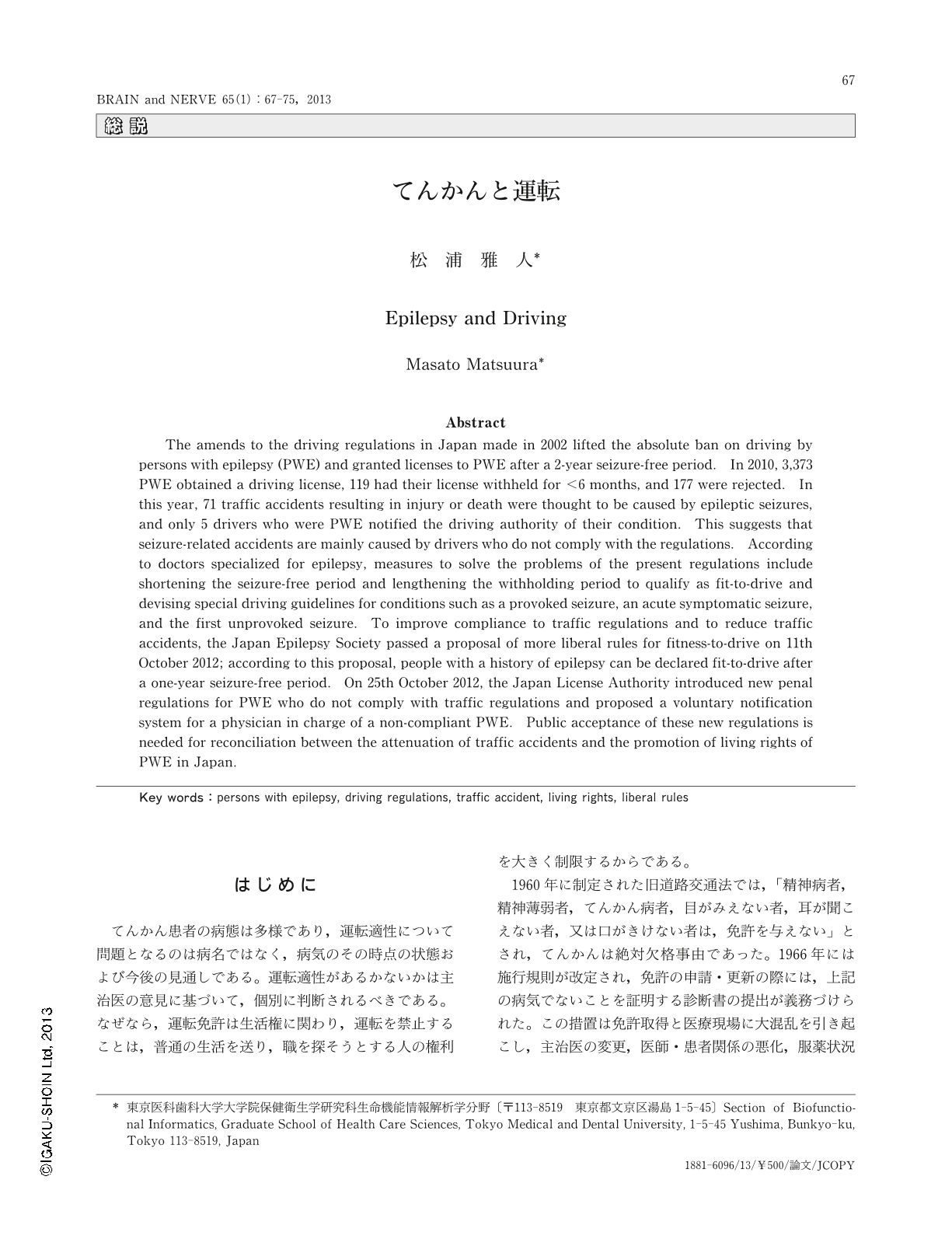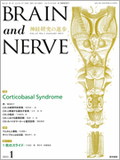Japanese
English
- 有料閲覧
- Abstract 文献概要
- 1ページ目 Look Inside
- 参考文献 Reference
はじめに
てんかん患者の病態は多様であり,運転適性について問題となるのは病名ではなく,病気のその時点の状態および今後の見通しである。運転適性があるかないかは主治医の意見に基づいて,個別に判断されるべきである。なぜなら,運転免許は生活権に関わり,運転を禁止することは,普通の生活を送り,職を探そうとする人の権利を大きく制限するからである。
1960年に制定された旧道路交通法では,「精神病者,精神薄弱者,てんかん病者,目がみえない者,耳が聞こえない者,又は口がきけない者は,免許を与えない」とされ,てんかんは絶対欠格事由であった。1966年には施行規則が改定され,免許の申請・更新の際には,上記の病気でないことを証明する診断書の提出が義務づけられた。この措置は免許取得と医療現場に大混乱を引き起こし,主治医の変更,医師・患者関係の悪化,服薬状況の悪化など種々の問題が生じ,この規則は11カ月で廃止された。
さらに,「てんかん病者」の定義にも議論が及び,長野地裁で1979年,「発作出現の抑制が十分に担保されていると社会通念上判断されるように至った場合には道路交通法所定のてんかん病者にあたらない」との判断が出された。さらに1993年,参議院決算委員会の質疑で国務大臣が「規定に該当するてんかん病者にあたるかどうかは医師の判断による」との見解を示した。この頃よりてんかんを持つ人の免許の取得状況が緩和されてきた。
1999年の国際障害者年にあたり,政府は各種の法律における障害者欠格事由の見直しを指示した。てんかん学会は,2000年のアジア・オセアニアてんかん学会議(AOEC)で採択された運転適性ガイドライン1)を参照しつつ,法律および政令に疾患名あるいはそれを暗示する表現は明記すべきでないこと,一定の条件を満たした場合には運転が許可されるべきことを主張し,2001年に「てんかんをもつ人における運転適性の判定指針」を公表した2)。そして,2002年に道路交通法が改正され,病気や障害を理由にした絶対欠格はなくなり,すべて相対欠格事由となった。てんかんのある人も,主治医の診断書または専門医による臨時適性検査によって一定の条件を満たせば免許が許可されることとなった。
Abstract
The amends to the driving regulations in Japan made in 2002 lifted the absolute ban on driving by persons with epilepsy (PWE) and granted licenses to PWE after a 2-year seizure-free period. In 2010, 3,373 PWE obtained a driving license, 119 had their license withheld for <6 months, and 177 were rejected. In this year, 71 traffic accidents resulting in injury or death were thought to be caused by epileptic seizures, and only 5 drivers who were PWE notified the driving authority of their condition. This suggests that seizure-related accidents are mainly caused by drivers who do not comply with the regulations. According to doctors specialized for epilepsy, measures to solve the problems of the present regulations include shortening the seizure-free period and lengthening the withholding period to qualify as fit-to-drive and devising special driving guidelines for conditions such as a provoked seizure, an acute symptomatic seizure, and the first unprovoked seizure. To improve compliance to traffic regulations and to reduce traffic accidents, the Japan Epilepsy Society passed a proposal of more liberal rules for fitness-to-drive on 11th October 2012; according to this proposal, people with a history of epilepsy can be declared fit-to-drive after a one-year seizure-free period. On 25th October 2012, the Japan License Authority introduced new penal regulations for PWE who do not comply with traffic regulations and proposed a voluntary notification system for a physician in charge of a non-compliant PWE. Public acceptance of these new regulations is needed for reconciliation between the attenuation of traffic accidents and the promotion of living rights of PWE in Japan.

Copyright © 2013, Igaku-Shoin Ltd. All rights reserved.


